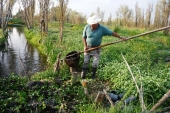












Certifiable food forest gardener, free gardening advice offered and accepted. Permaculture is the intersection of environmentalsim and agriculture.




Brenda
Bloom where you are planted.
http://restfultrailsfoodforestgarden.blogspot.com/








Get involved -Take away the standing of corporations MovetoAmmend.org




Brenda
Bloom where you are planted.
http://restfultrailsfoodforestgarden.blogspot.com/




Certifiable food forest gardener, free gardening advice offered and accepted. Permaculture is the intersection of environmentalsim and agriculture.














|
Goodbye moon men. Hello tiny ad:
The new purple deck of permaculture playing cards
https://www.kickstarter.com/projects/paulwheaton/garden-cards
|




